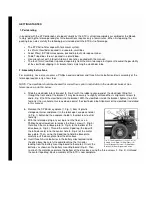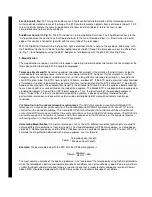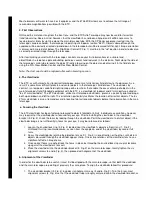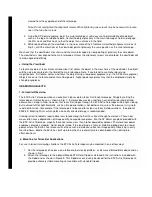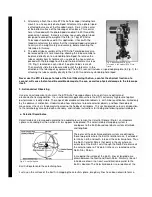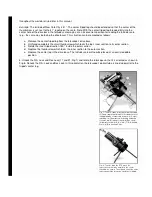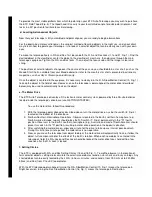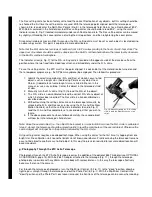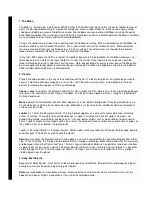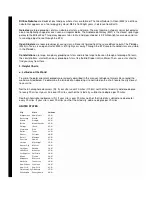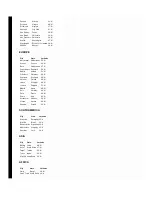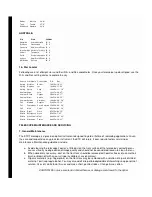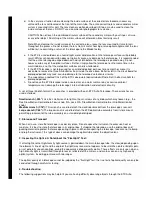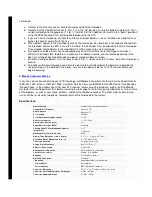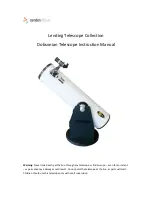
through the Photo Port. The #64 T-Adapter threads on to the Photo Port, followed by a T-Mount for the particular
brand of 35mm camera being used, followed in turn by the camera body itself (with camera lens removed).
Note that the #64 T-Adapter consists of two sections (1 and 2, Fig. 11) which
are threaded together in shipment. Either of the following photographic
mounting formats may be used to couple the camera body to the telescope's
Photo Port thread.
Format 1:
Camera Body + T-Mount + Section (1) of the #64 TAdapter.
Format 1 utilizes the short section only of the #64 T-Adapter to permit close-
coupling of a camera body to the telescope at an effective photographic speed
of f/14 and a transmission value (the so-called "T"-value) of 18. In this format
vignetting will occur: the photographic image will appear on film as a circle,
without illuminating the complete 35mm frame.
Format 2:
Camera Body + T-Mount + Sections (1) and (2) of the #64 T-
Adapter.
Format 2 utilizes both sections of the #64 T-Adapter threaded together to form a rigid unit as shown in Fig. 11, the
telescope is operating at a photographic speed of f/16 and T-value of 23, but without any field vignetting: images
are illuminated to the edges of a standard 35mm frame.
To frame an object in the viewfinder of the 35mm camera body, loosen slightly the knurled ring (3, Fig. 11) which
threads the #64 T-Adapter to the telescope's Photo Port; rotate the camera body to achieve proper framing of the
object; then re-tighten the knurled ring.
Photography through a long lens such as the ETX requires special technique for good results, and the
photographer should probably expect to waste a roll or two of film in acquiring this technique. Long-lens
photography has its own rewards, however; rewards that short-focus lenses can not duplicate.
A few tips on photography through the ETX:
1. Use a rigid tabletop or the optional Meade ETX Field Tripod as a platform for the telescope. At effective
focal lengths of 1250mm to 1450mm, even small external vibrations can easily ruin an otherwise good
photo.
2. Use a cable-operated shutter release. Touching the camera body to initiate shutter operation will almost
certainly introduce undesirable vibrations.
3. Focus the image with extreme care. While observing the subject through the camera's reflex viewfinder,
turn the ETX's focus knob (5, Fig. 1) to achieve the sharpest possible focus.
4. Correct shutter speeds vary widely, depending on lighting conditions and the film used. Trial-and-error is
the best way to determine proper shutter speed in any given application.
5. Terrestrial photography through the ETX is sensitive to heat waves rising from the Earth's surface. Long
distance photography is best accomplished in the early morning hours, before the Earth has had time to
build up heat.
6. Photography of the Moon and planets through the ETX can be especially gratifying, but points 1 through 4
should be particularly noted in this case. Lunar or planetary photography requires that the telescope be
polar aligned and that the telescope's motor drive be in operation.
Note that long-exposure photography of deep-space objects is not practical with the ETX, since this type of
photography requires special electronic and optical guiding devices not available for this telescope.
h. Objects In Space
Listed below are just some of the many astronomical objects that can be seen with your ETX Astro Telescope:
Fig. 11: Using the #64 T-Adapter. (1) Short
section of #64 T-Adapter; (2) Extension
section of #64 T-Adapter; (3) Knurled
attachment ring; (4) T-Mount; (5) Flip-Mirror
Control in "down" position; (6) 35mm camera
body.
Summary of Contents for ETX Series
Page 20: ......


